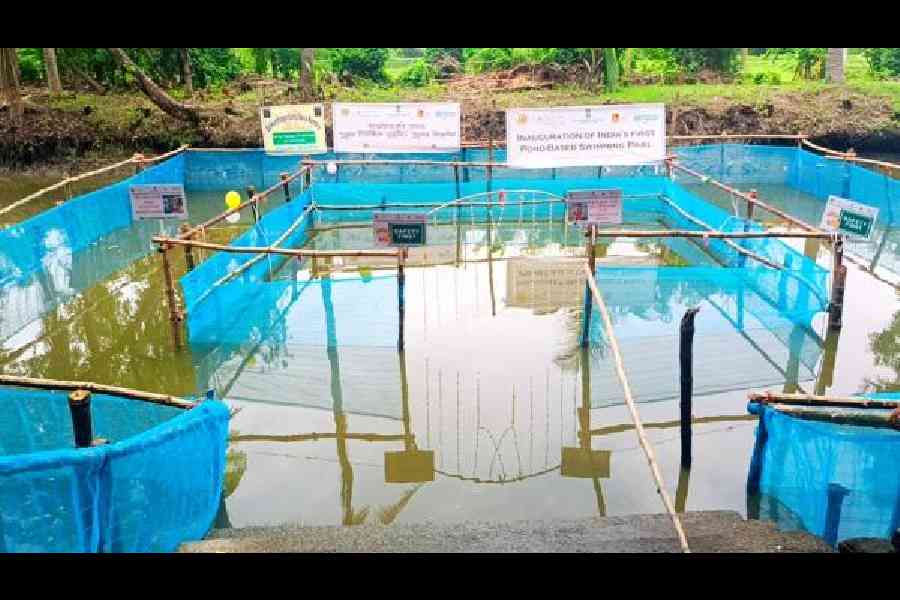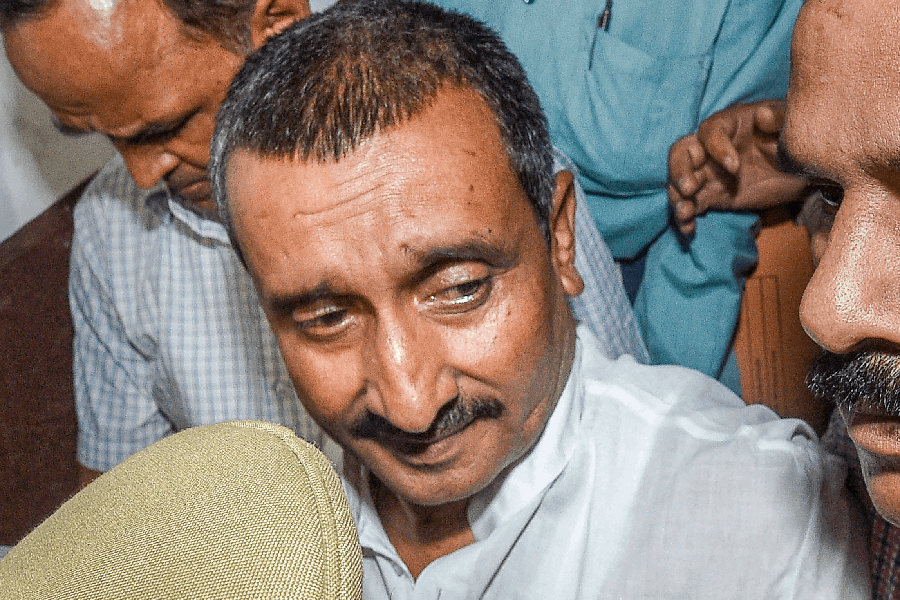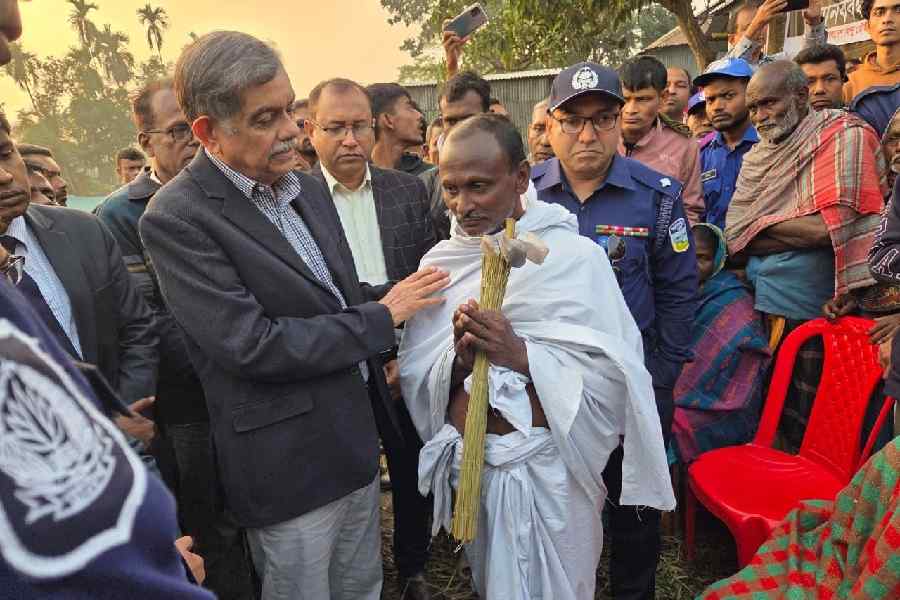A voluntary organisation has launched an initiative to impart survival swimming lessons to kids between the ages of five and 10 in the Sunderbans where many children die by drowning every year.
Two pools were inaugurated for the purpose in Baikunthapur and Bhubaneswari villages of Kultali in the Sunderbans under South 24 Parganas last week.
The primary goal of the initiative is to equip children with the ability to survive in water for at least a few minutes in case of emergencies.
The initiative conceptualised by the Child in Need Institute (CINI) was implemented with the support of the World Health Organisation (WHO), the Union health ministry and the state government besides the George Institute for Global Health. The Baikanthapur Sishu Seva Kendra and Swadhikar provided the ponds.
“Our focus is to impart basic swimming skills with a strong emphasis on survival,” said Sujoy Roy, CINI’s national advocacy officer who conceptualised the initiative.
According to WHO, drowning is the third leading cause of global mortality. In the Sunderbans, drowning incidents are alarmingly frequent, affecting nearly every family in the region.
“Death by drowning was not a public health issue in our country until 2023 when, after much persuasion, the government of India acknowledged it. We began to create awareness about this issue in the Sunderbans in 2018 and last year envisaged a pond-based swimming pool in two places.” Roy said.
Under the system, a section of a community pond is transformed into a pool with two cells and protective fencing.
Explaining the infrastructure of the pool, Roy said: “The 300ftx300ft pool includes a fenced-off area with a net, with two cells — one with 3ft deep water and another with 4ft deep water, ensuring children can safely stand without the fear of drowning. Once the children learn to float in the first cell, they are allowed to move to the second”.
"Unlike urban pools with clean transparent water that require high maintenance, our pond-based model offers a more accessible solution for rural communities,” he added.
Locals with expertise in swimming have been specially trained to impart swimming lessons to the children. Each child will be trained for 21 days free of cost with each session lasting 45 minutes, said CINI’s founder-director Samir Choudhury, a paediatrician.
Given the abundance of waterbodies in the Sunderbans, the necessity for survival swimming skills is paramount.
“Ponds are vital for livelihoods but also pose significant risks, especially for infants and children,” stated Jagnoor Jagnoor, a senior research fellow (injury programme) of George Institute for Global Health.
“The pond-based swimming pool concept was originally successful in Bangladesh where it significantly reduced drowning rates by 80 per cent between 2012 and 2015,” Jagnoor said.
To widen its support, the CINI has also launched Kavach, where women of self-help groups care for children under five.
In December 2023, the Union health ministry unveiled the ‘Strategic Framework for Drowning Prevention,’ outlining national and state action plans aimed at reducing drowning incidents.










